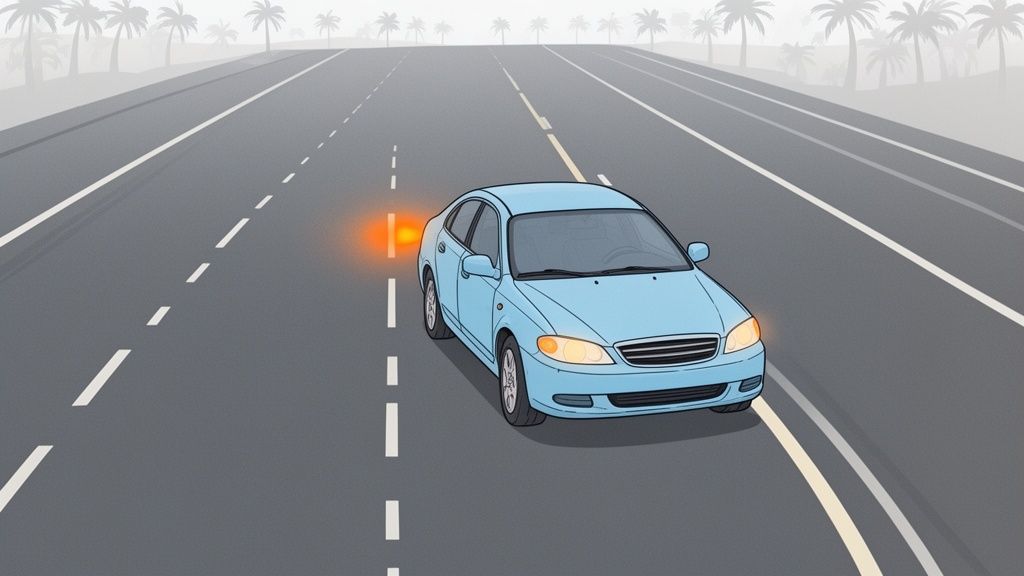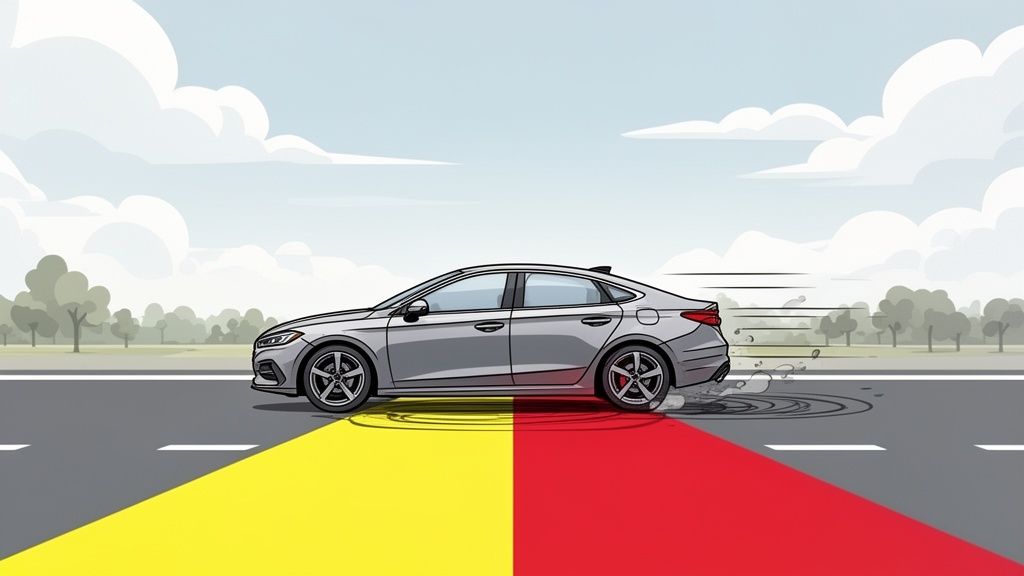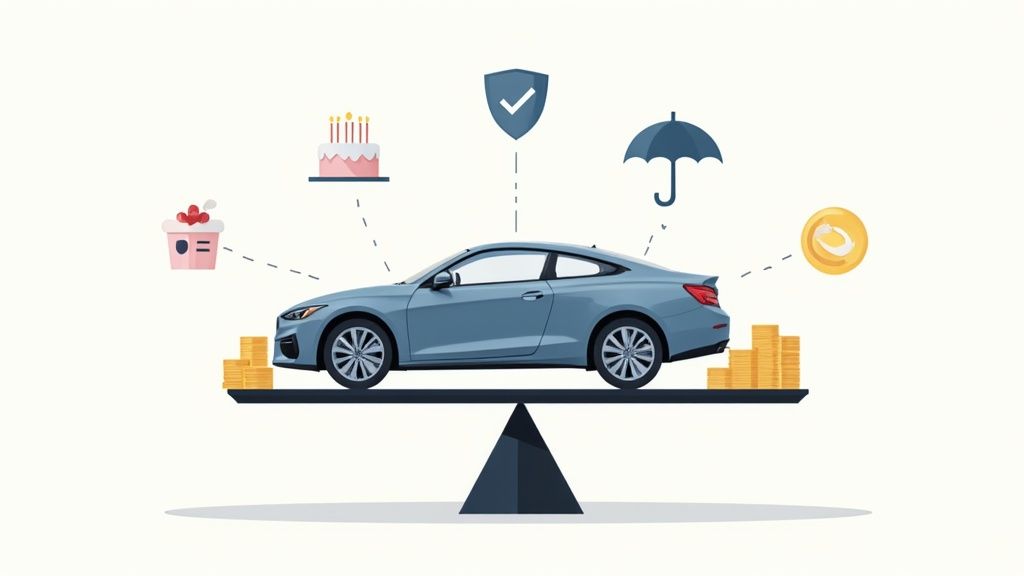Night driving presents unique challenges that can test even experienced drivers. At DriverEducators.com, we understand the importance of staying safe on the road after dark.
In this post, we’ll share essential tips for safe driving at night, covering vehicle preparation, driving techniques, and ways to combat fatigue. These practical strategies will help you navigate confidently and safely when the sun goes down.
How to Prepare Your Vehicle for Night Driving
Night driving requires a well-prepared vehicle. Here are practical steps to get your car ready for nighttime journeys.
Optimize Your Headlights
Your headlights are your primary tool for navigating dark roads. Clean your headlight lenses thoroughly. Use a specialized headlight cleaner or a mixture of baking soda and vinegar to remove grime and oxidation. This simple step can significantly improve light output.
Check your headlight aim. Misaligned headlights reduce visibility and potentially blind oncoming drivers. The brightest part of each headlight beam should sit slightly below the horizontal line and be centered on the vertical mark. Most auto parts stores offer free headlight aiming services, or you can do it yourself using a level surface and a wall.
Maintain Clear Visibility
Windshield wipers play a key role in maintaining visibility, especially during nighttime rain. Inspect your wipers for signs of wear (cracks, splits, or streaking). The National Highway Traffic Safety Administration recommends you replace wiper blades every 6 to 12 months.
Don’t overlook your windshield. Clean both the inside and outside thoroughly. Use a microfiber cloth and a quality glass cleaner to remove smudges and film that cause glare from oncoming headlights.
Check All Exterior Lights
Perform a complete exterior light check. This includes headlights, taillights, brake lights, turn signals, and emergency flashers. Replace any burnt-out bulbs immediately. The Insurance Institute for Highway Safety reports that properly functioning exterior lights can reduce the risk of nighttime crashes by up to 20%.
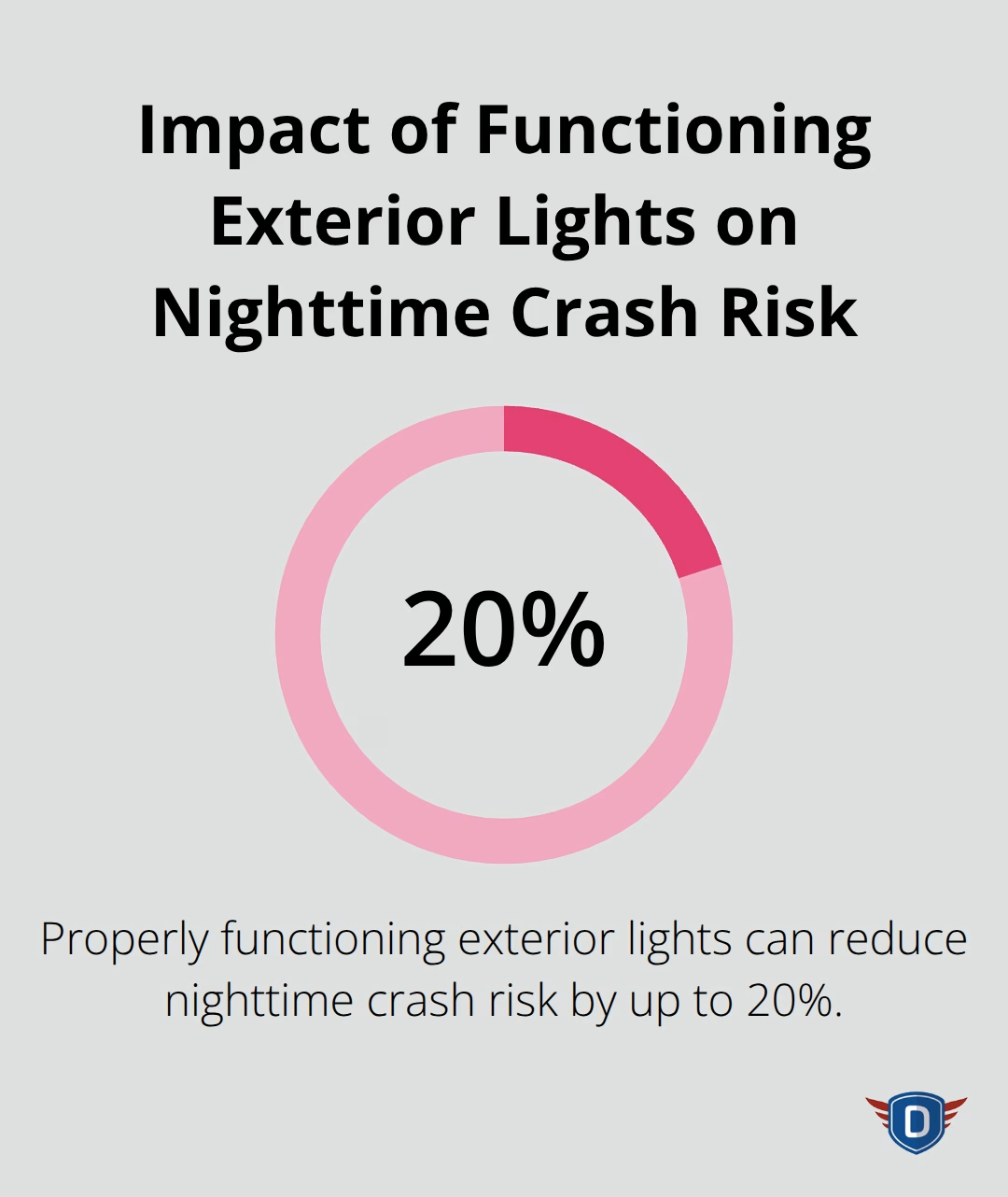
Keep Mirrors Clean and Adjusted
Clean mirrors are essential for safe night driving. Use a glass cleaner and lint-free cloth to ensure your rearview and side mirrors are spotless. Adjust your mirrors properly to minimize blind spots and reduce glare from vehicles behind you.
These practical steps will significantly improve your visibility and safety during night drives. Now, let’s move on to essential night driving techniques that complement your well-prepared vehicle.
How to Drive Safely at Night
Night driving demands a unique set of skills and heightened awareness. Adapting your driving techniques is essential to navigate safely after dark. Here are some key strategies to keep you safe on nighttime roads.
Adjust Your Speed and Distance
Reduce your speed when driving at night. The National Safety Council reports that 13% of drivers say they fall asleep while driving at least once a month, and 4% say they have caused a crash by falling asleep while driving. Slower speeds allow more time to react to unexpected obstacles or hazards on the road.
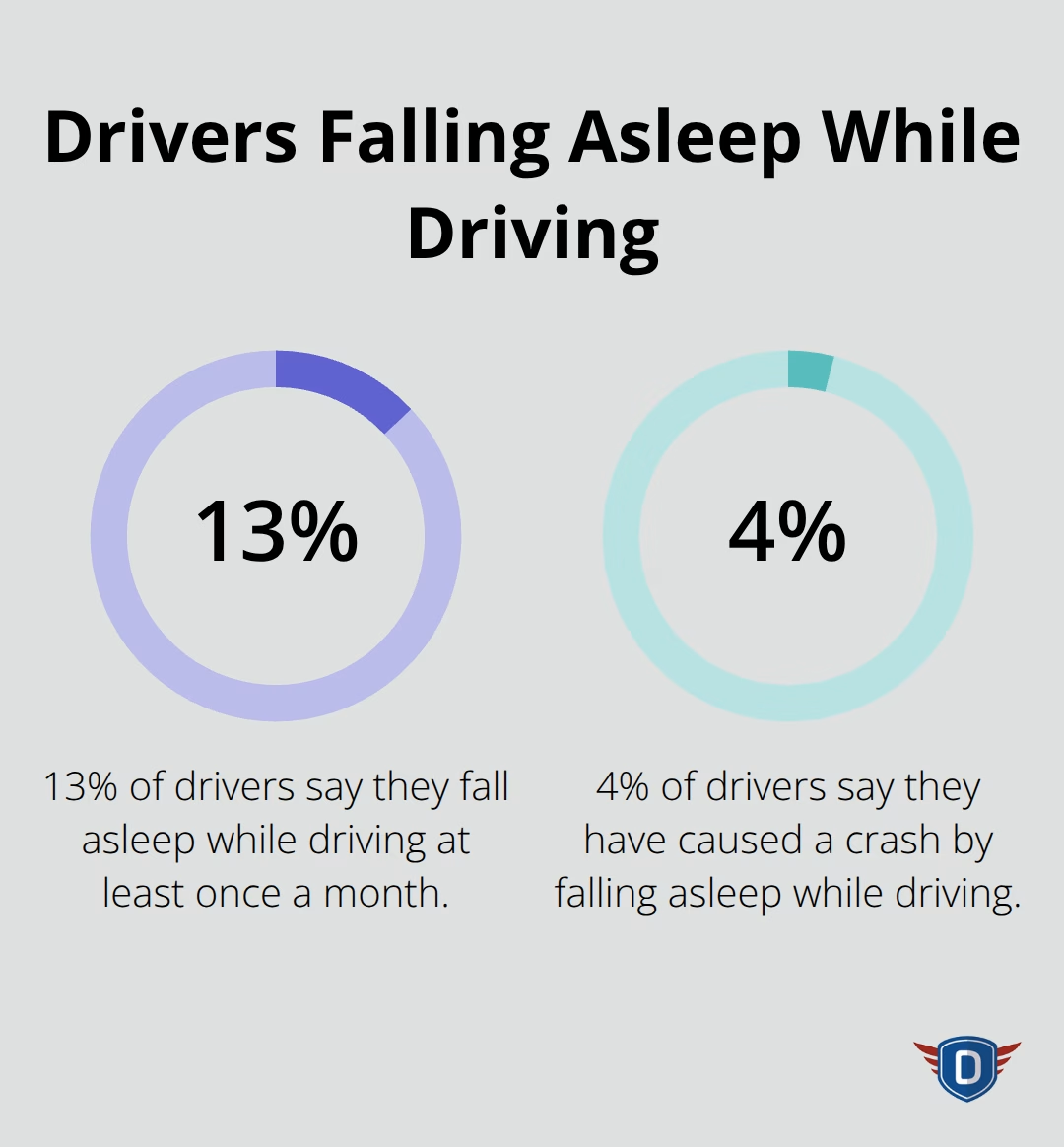
Increase your following distance from other vehicles. During daylight hours, maintain a 3-second gap between you and the car in front. At night, extend this to at least 4 seconds. This extra space provides more time to react if the vehicle ahead suddenly brakes or encounters a problem.
Master Your Headlight Usage
Proper use of your headlights is vital for night driving safety. On open roads with no oncoming traffic, switch to high beams to maximize your visibility. However, dim your lights when you spot oncoming vehicles or when you follow another car closely.
The National Highway Traffic Safety Administration has amended its lighting standard to permit the certification of adaptive driving beam (ADB) headlamps. This practice can significantly increase your ability to spot potential hazards well in advance.
Develop a Proactive Scanning Technique
Night driving requires constant vigilance. Scan the road ahead, focusing not just on what’s directly in front of you, but also on the periphery. Look for reflections from animals’ eyes, movement in bushes along the roadside, or any unexpected lights that could indicate a hazard.
Pay special attention to road signs and markings. These can be harder to spot at night, but they provide important information about upcoming curves, intersections, or potential dangers.
Minimize Glare and Distractions
Glare from oncoming headlights can temporarily blind you. To combat this, focus on the right edge of the road as a guide when faced with bright lights. Adjust your rearview mirror to its night setting to reduce glare from vehicles behind you.
Minimize interior distractions. Keep your dashboard lights dimmed and avoid using bright screens (like your phone or GPS) that can create reflections on your windshield. These small adjustments can significantly improve your night vision and overall safety.
Now that we’ve covered essential night driving techniques, let’s explore how to combat driver fatigue, another critical aspect of safe nighttime travel.
How to Stay Alert During Night Drives
Recognize Drowsiness Warning Signs
Night driving requires heightened alertness. You must recognize early signs of drowsiness. These include frequent yawning, heavy eyelids, difficulty focusing, and lane drifting. About 1 in 25 adult drivers report having fallen asleep while driving in the previous 30 days, and many more admit to driving when they were sleep-deprived. Don’t ignore these warning signs – they indicate you need a break.

Plan Regular Rest Stops
On long night drives, schedule breaks every two hours or 100 miles (whichever comes first). Drivers must take a 30-minute break when they have driven for a period of 8 cumulative hours without at least a 30-minute interruption. During these breaks, exit your vehicle, stretch your legs, and breathe fresh air. A short 15-20 minute power nap can significantly refresh your alertness.
Optimize Your Driving Environment
Keep your vehicle’s temperature between 68-72°F (20-22°C) to stay alert. A too-warm cabin induces drowsiness, while overly cold conditions distract. Use your car’s ventilation system to circulate fresh air, which helps you stay awake and focused.
Choose Your Pre-Drive Meal Wisely
Your pre-drive meal impacts your alertness. Avoid heavy, carb-rich meals before night driving as they cause sleepiness. Choose a light, protein-rich snack instead. Stay hydrated, but monitor your fluid intake to avoid frequent restroom stops. While caffeine provides a short-term boost, it doesn’t replace proper rest.
Use Technology to Your Advantage
Modern vehicles often come equipped with driver alertness monitoring systems. These systems (which use sensors to detect signs of fatigue) can provide timely warnings if you show signs of drowsiness. If your vehicle has this feature, familiarize yourself with how it works and heed its warnings. However, don’t rely solely on technology – your own judgment remains the most important factor in deciding when to take a break.
Final Thoughts
Night driving challenges drivers, but proper preparation and vigilance ensure safe navigation after dark. We provided essential tips for safe driving at night, covering vehicle preparation, driving techniques, and fatigue prevention. These strategies equip you to handle nighttime driving demands and enhance your safety on the road.
DriverEducators.com commits to helping you become a safer, more confident driver. Our driver education programs and experienced instructors provide the knowledge and skills needed for safe road navigation (day or night). We encourage you to practice these night driving techniques regularly to improve your safety and the safety of others.
Safe driving requires continuous learning and adaptation. Stay alert, stay visible, and prioritize safety every time you drive. Our comprehensive resources and expert guidance can support your journey to becoming a skilled night driver.
